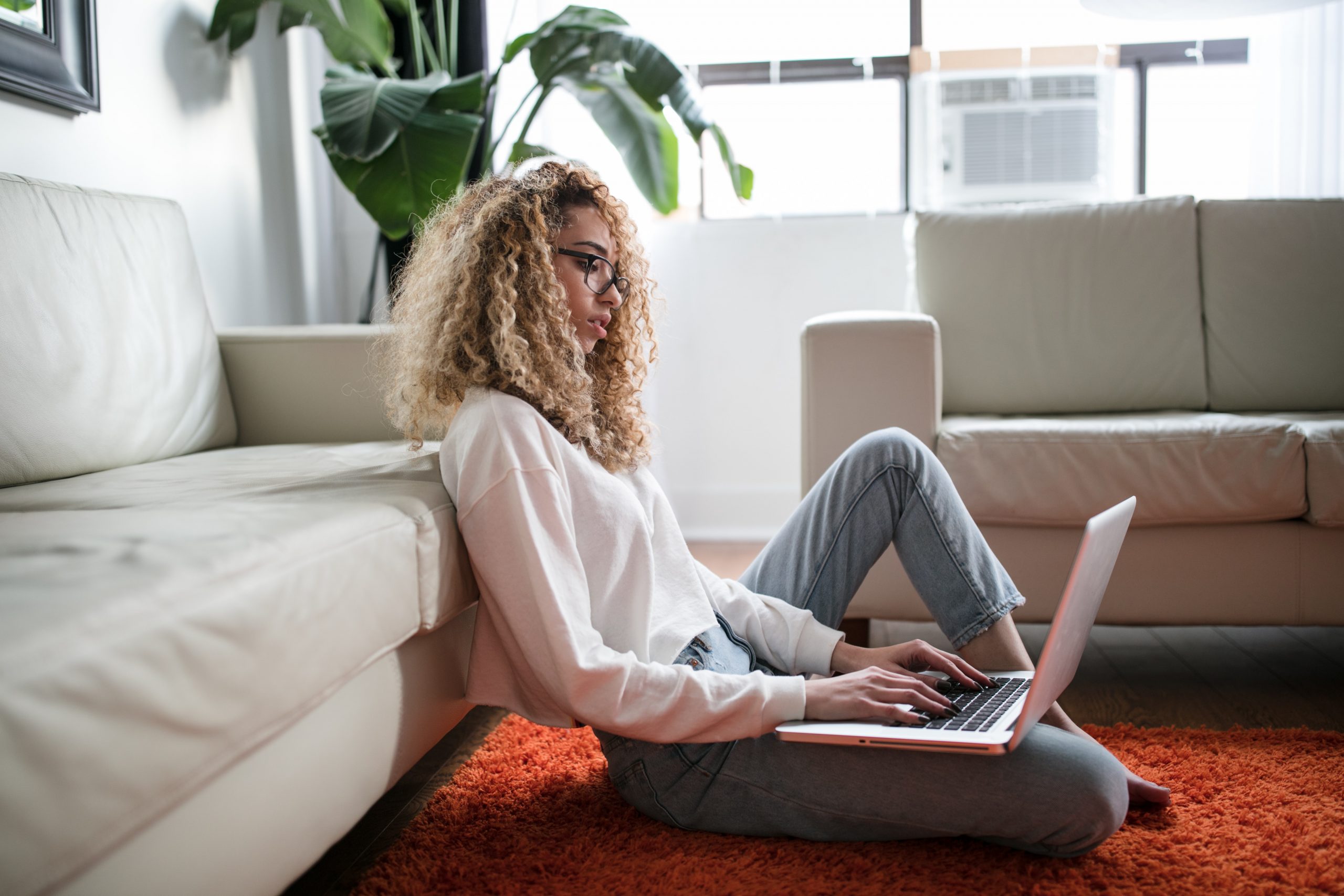ARE you among the estimated 54 per cent of people currently working from home without a desk to sit at?
Whether working from the sofa, propped up on the breakfast bar or making do with the bed in the spare room, around 8.2 million Brits could be putting themselves at risk of back problems as a knock-on effect of the pandemic.
Research* conducted among 2,000 remote workers about their working environment revealed that only 46 per cent had a desk to sit at – with just over a quarter of people (27 per cent) using the kitchen table and 15 per cent sitting on the sofa to work.
As well as back problems, not having the correct working from home set up could also lead to issues with posture, eyesight and joints.
Peterborough-based recruitment agency Anne Corder Recruitment has some advice for employees working from home, as well as employers who have a duty of care to their staff.
Managing director Nel Woolcott said: “With more and more of us now working from home on a permanent or hybrid basis, it is hugely important that we have the fundamentals right to be able to work safely, healthily and productively from our remote location.
“Having a properly organised and comfortable workspace is paramount, and employers should ensure that their staff are working in suitable conditions. Employees should think about carrying out a working from home MOT, looking at areas that would benefit from some attention to help with their overall wellbeing.
“For staff unsure of what constitutes reasonable working from home conditions, speak to your employer. We always advocate that assessing is important but sometimes overlooked everyday work life aspects of having a suitable chair, a desk at the right height or a correctly positioned monitor or screen.
“Poor posture can affect almost every part of the body, the back in particular – but it is also common to get pains in the elbow or wrist joints as a result of not sitting properly. This can lead to repetitive strain injury, and hunched shoulders can also cause neck pain.”
Here are some tips to ensure that working from home doesn’t become a pain in the neck – or anywhere else:
- Check the screen is well positioned and properly adjusted – it is estimated that one in four users move the screen closer to focus on their work. Locate the computer screen four or five inches below your eye level.
- Make sure lighting conditions are suitable and try and get as much natural light into your work area as possible. Adjust your screen lighting/brightness if possible.
- Blink! We naturally blink about 20 times every minute, but when focusing on a screen this can drop by as much as half. This means your eyes are at much greater risk of drying out when working on the computer.
- Make sure your screen is clean to help reduce glare.
- Arthritis Research UK suggests that as many as one-in-six people, in the UK suffer from back pain, so work at a desk or table with adequate knee/foot clearance so that you can sit/stand close to your laptop.
- Use a separate keyboard and mouse with your laptop if you have them and position them directly in front of you within easy reach.
- Position your laptop so that the top of the screen is level with your eye height. If you don’t have a laptop riser, use a box file or some books to raise your laptop. Or plug in a separate monitor if you have one.
- If sitting, use an adjustable chair. Use a rolled-up hand towel for extra lower back support, if needed. If your chair is too low, sit on a cushion to raise your seat height.
- When having a break, try a few simple stretches to stay mobile, and remember to keep drinking water.
- To care for wrists and hands, take regular short breaks to stretch and move your arms and hands. Try to divide up your time by doing different tasks so that you don’t spend long periods doing the same thing.
Nel added: “The NHS suggests doing at least 150 minutes of exercise a week, something that should help avoid the back pain that can be a symptom of sitting for long periods in an unsuitable position.
“Currently, only 22 per cent of workers are managing to get 30 minutes of exercise a day. While this may be difficult for some people to fit into their working day, it is a good idea to try and go for a walk if you can – particularly as we head towards brighter and warmer days.”









